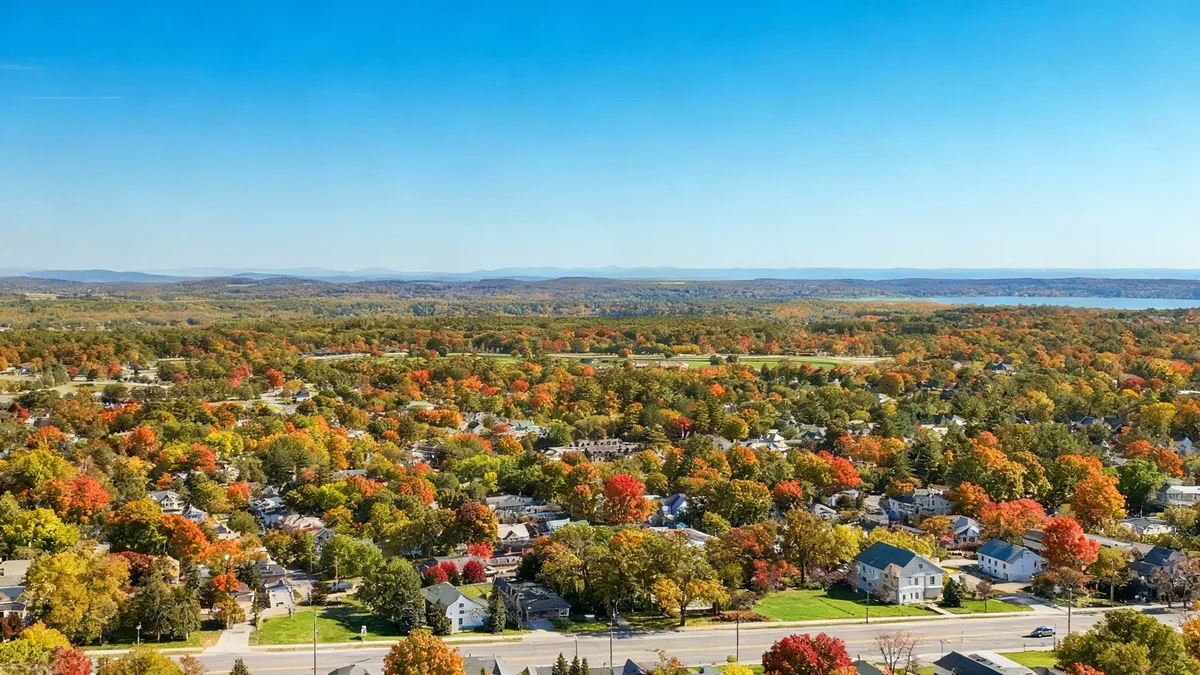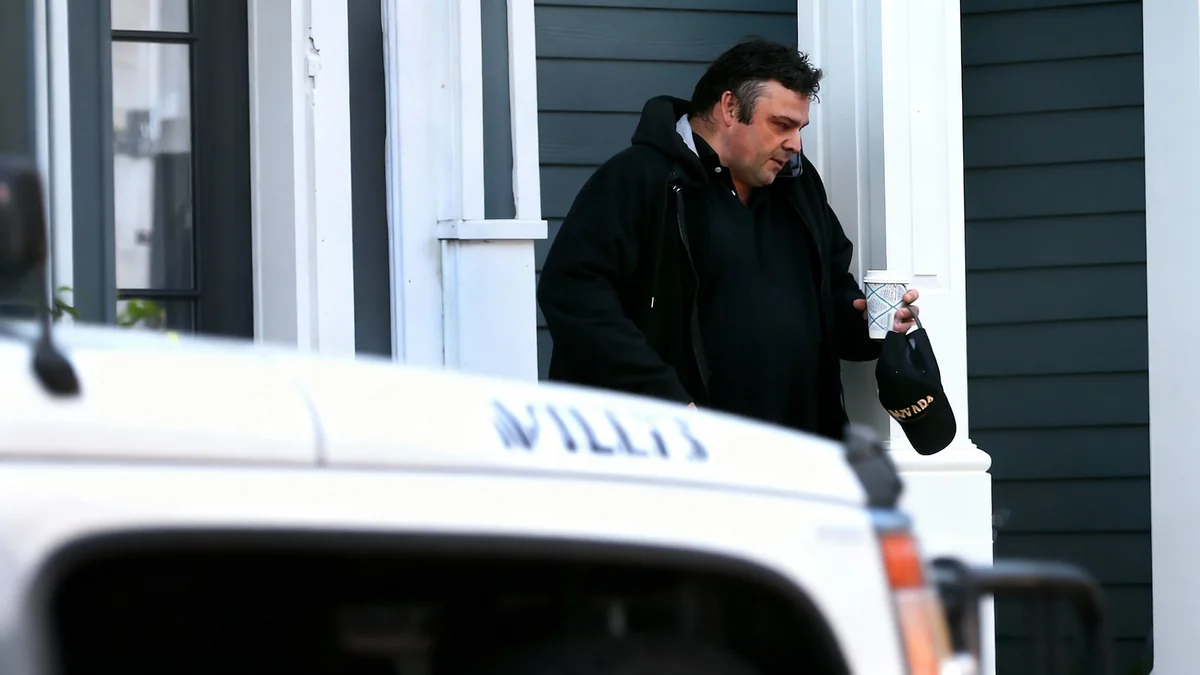The small village of Tivoli, New York, once considered a quiet hamlet for students of nearby Bard College, is experiencing a significant surge in its real estate market. Positioned between the popular towns of Hudson and Rhinebeck, Tivoli is attracting a new wave of buyers, leading to rising property values and highly competitive sales for its limited housing stock.
Key Takeaways
- Tivoli, a village with just over 1,000 residents, is becoming a sought-after location in New York's Hudson Valley.
- Property values are rising, with Dutchess County seeing a 7.8% year-over-year increase in median home listing prices.
- Demand is high for homes under $1 million, which often sell quickly and above the asking price.
- New buyers include those priced out of nearby towns, Bard College parents, and individuals seeking investment properties.
A Quiet Town Gains New Attention
For years, Tivoli remained a lesser-known destination in the Hudson Valley. According to Anthony D’Argenzio, founder of This Old Hudson Team at Houlihan Lawrence, the village has maintained an “undiscoveredness” due to its more relaxed personality compared to its high-profile neighbors.
However, this is changing. “It’s got a lot to offer from a real estate perspective,” D’Argenzio noted, highlighting the town's inventory of Victorian, farmhouse, and brick-and-stone homes. This architectural character is a significant draw for new residents.
Raj Kumar, an agent with the Lillie K. Team at Four Seasons Sotheby’s International Realty, described Tivoli as a “hidden gem.” He explained that many buyers familiar with Hudson and Rhinebeck may not have heard of it, but its location is a major asset. The village is located approximately 115 miles north of New York City.
From College Town to Family Destination
Located just two miles from the Bard College campus, Tivoli has traditionally been associated with the academic community. Nancy Felcetto, an associate broker at Brown Harris Stevens, observed that it “used to feel more like a college town.” Now, the demographic is shifting. “You’re seeing people move in who were priced out of other towns,” Felcetto said. This includes a growing number of people in their 30s looking to raise families, drawn by the town's community spirit.
Analyzing the Market Data
The real estate market in the broader Hudson Valley region has shown consistent growth. In Dutchess County, where Tivoli is located, the median home listing price increased by 7.8% year over year. According to Realtor.com data from August, the median home sold price in the county was $505,000.
This contrasts slightly with northern Columbia County, where the median price was higher at $580,000, despite a smaller annual price increase of 3.2%.
Intense Competition for Limited Inventory
One of the defining features of Tivoli's market is its limited supply. With only about 600 homes in the village, inventory is scarce. Felcetto noted that only 19 homes were sold in Tivoli in 2025 due to this shortage. The low availability fuels intense competition, especially for properties at lower price points.
“Anything under a million sells quickly. It’s a hot, hot market.”
Felcetto shared an example of a historic house listed for $320,000 that needed extensive repairs but still generated a large number of inquiries. This illustrates the strong buyer interest in gaining a foothold in the village, regardless of a property's condition.
Selling Prices Exceed Asking Prices
The competitiveness of the market is reflected in final sale prices. According to Raj Kumar, selling prices in Tivoli year-to-date have been, on average, 102% of the asking price. This indicates that many properties are selling for more than their listed value, a clear sign of a strong seller's market.
Who is Buying in Tivoli?
The demand for homes in Tivoli comes from several distinct groups. The primary driver is buyers who find themselves priced out of more established Hudson Valley markets like Rhinebeck and Hudson. Tivoli offers a more accessible entry point while still providing the region's characteristic charm.
Another significant group consists of parents of Bard College students. D’Argenzio stated that many are “Bard parents who want an investment property for their kids,” a trend that has contributed to the upward pressure on prices.
The buyer profile includes:
- First-time homebuyers from New York City.
- Second-home owners seeking a weekend retreat.
- Families looking for a community-oriented environment.
- Investors, including those purchasing properties for their college-aged children.
D’Argenzio also mentioned the presence of “climate refugees,” buyers from areas like California who see greater long-term value and stability in the Hudson Valley. “Compare a $1 million home here to one in Los Angeles, and the value is clear,” he said.
The Appeal of Tivoli's Lifestyle
Beyond real estate metrics, Tivoli's appeal lies in its quality of life. The village features a small but vibrant downtown with shops, restaurants, and the art-focused Hotel Tivoli. The hotel, renovated a decade ago by the late artist and resident Brice Marden, is credited with helping to revitalize the downtown area.
Nature is also a major draw. The village is adjacent to the Tivoli Bays Wildlife Management Area, a 1,722-acre conservation space offering hiking and outdoor recreation. This proximity to protected natural land is a significant amenity for residents.
The village's location is another key benefit. “You’re the perfect driving distance from anywhere, including Hudson, Kingston or Rhinebeck,” Kumar said, highlighting its convenience for accessing the wider region's attractions.
Future Market Outlook
Real estate experts believe Tivoli's market has not yet reached its peak. The combination of limited inventory, particularly of historic homes with unique character, and sustained interest from out-of-state and New York City buyers is expected to continue driving growth.
“Prices will continue to increase,” D’Argenzio predicted, citing the rarity of the historic properties as a primary factor. “People want these homes with character and stories.”
Kumar agreed, suggesting that the village's geographical position will keep it attractive to buyers who feel they are “not yet paying a premium” compared to neighboring towns. Felcetto added that while the market is stabilizing, “demand is still outstripping supply, especially under a million dollars.”
The traditional seasonality of the real estate market also appears to be changing. “It used to be a seasonal market. Now it’s not,” Felcetto concluded, indicating that strong buyer activity is likely to persist through the winter months.





